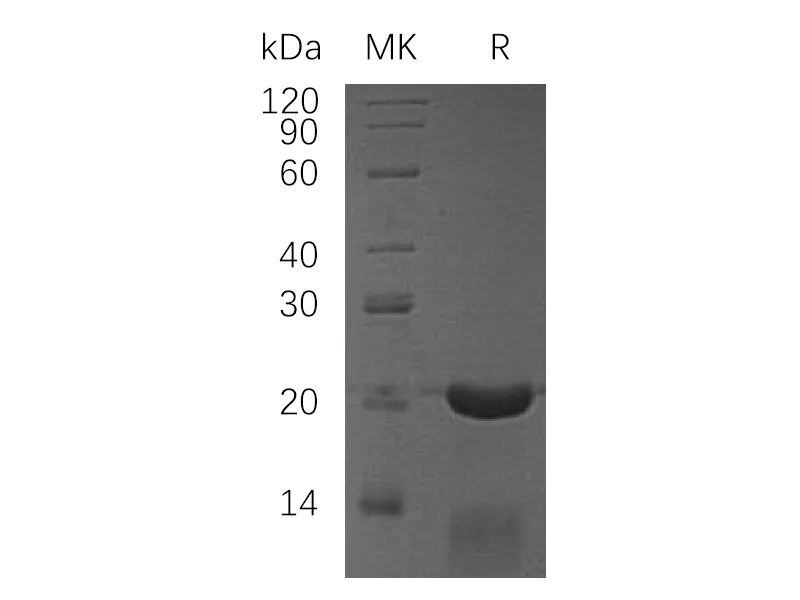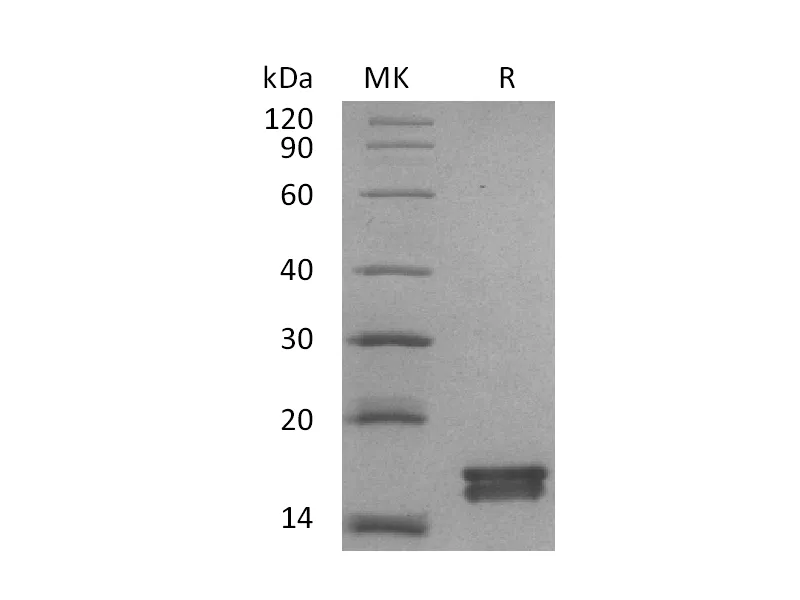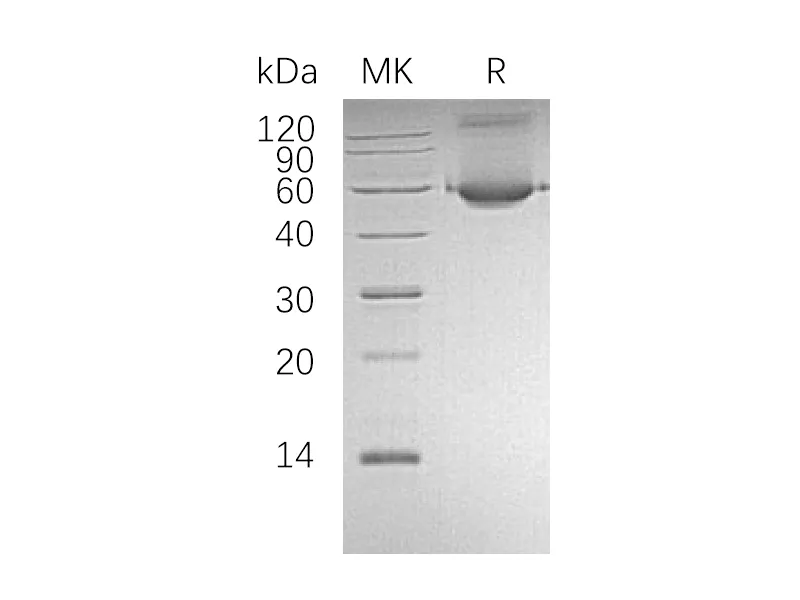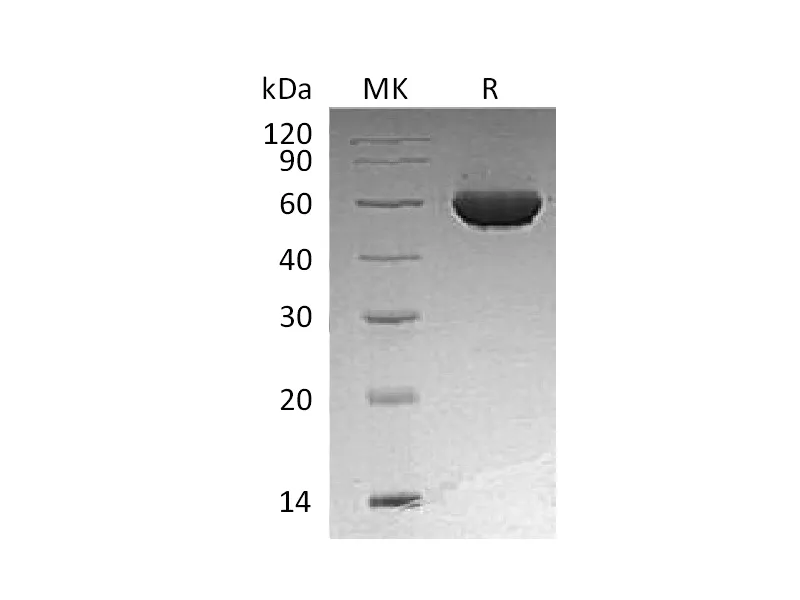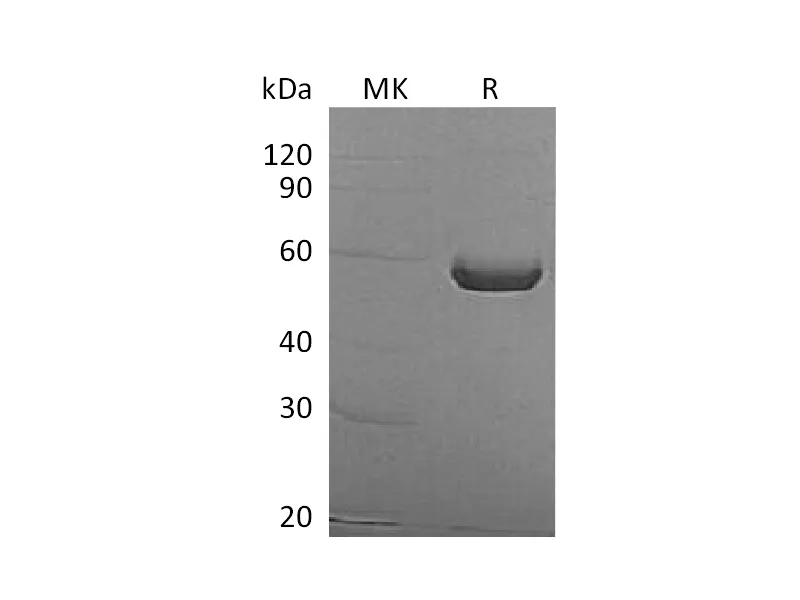| Name | Recombinant Human CRADD |
| Purity | Greater than 95% as determined by reducing SDS-PAGE |
| Endotoxin level | <1 EU/µg as determined by LAL test. |
| Construction | Recombinant Human Caspase and RIP Adapter With Death Domain is produced by our E.coli expression system and the target gene encoding Met1-Glu199 is expressed. |
| Accession # | P78560 |
| Host | E.coli |
| Species | Human |
| Predicted Molecular Mass | 23 KDa |
| Buffer | Lyophilized from a 0.2 μm filtered solution of 20mM PB, 150mM NaCl, pH 7.4. |
| Form | Lyophilized |
| Shipping | The product is shipped at ambient temperature.Upon receipt, store it immediately at the temperature listed below. |
| Stability&Storage | Store at ≤-70°C, stable for 6 months after receipt.Store at ≤-70°C, stable for 3 months under sterile conditions after opening. Please minimize freeze-thaw cycles. |
| Reconstitution | Always centrifuge tubes before opening.Do not mix by vortex or pipetting.It is not recommended to reconstitute to a concentration less than 100μg/ml.Dissolve the lyophilized protein in distilled water.Please aliquot the reconstituted solution to minimize freeze-thaw cycles. |
Alternative Names
Death Domain-Containing Protein CRADD; Caspase and RIP Adapter with Death Domain; RIP-Associated Protein with A Death Domain; CRADD; RAIDD
Background
Death Domain-Containing Protein CRADD (CRADD) is widely expressed in most tissues, with particularly high expression in the adult heart, testis, liver, skeletal muscle, fetal liver, and kidney. CRADD contains one CARD domain that mediates the interaction with caspase-2, and one death domain involved in the binding of RIP protein. CRADD functions as an apoptotic adaptor molecule specific for caspase-2 and FASL/TNF receptor-interacting protein RIP. CRADD induces cell apoptosis/cell death in numerous tissues. Defects in CRADD will result in mental retardation.
Note
For Research Use Only , Not for Diagnostic Use.

